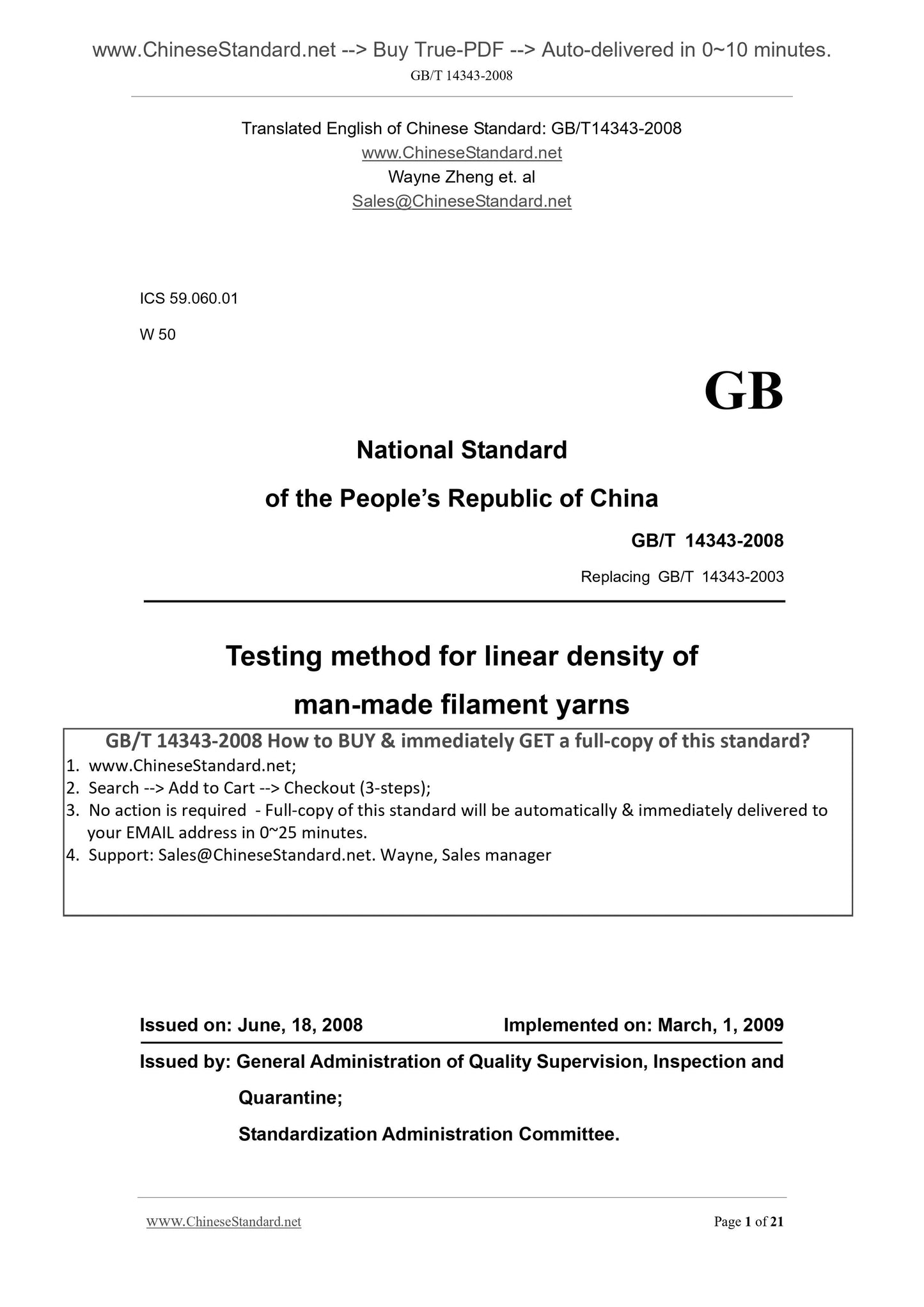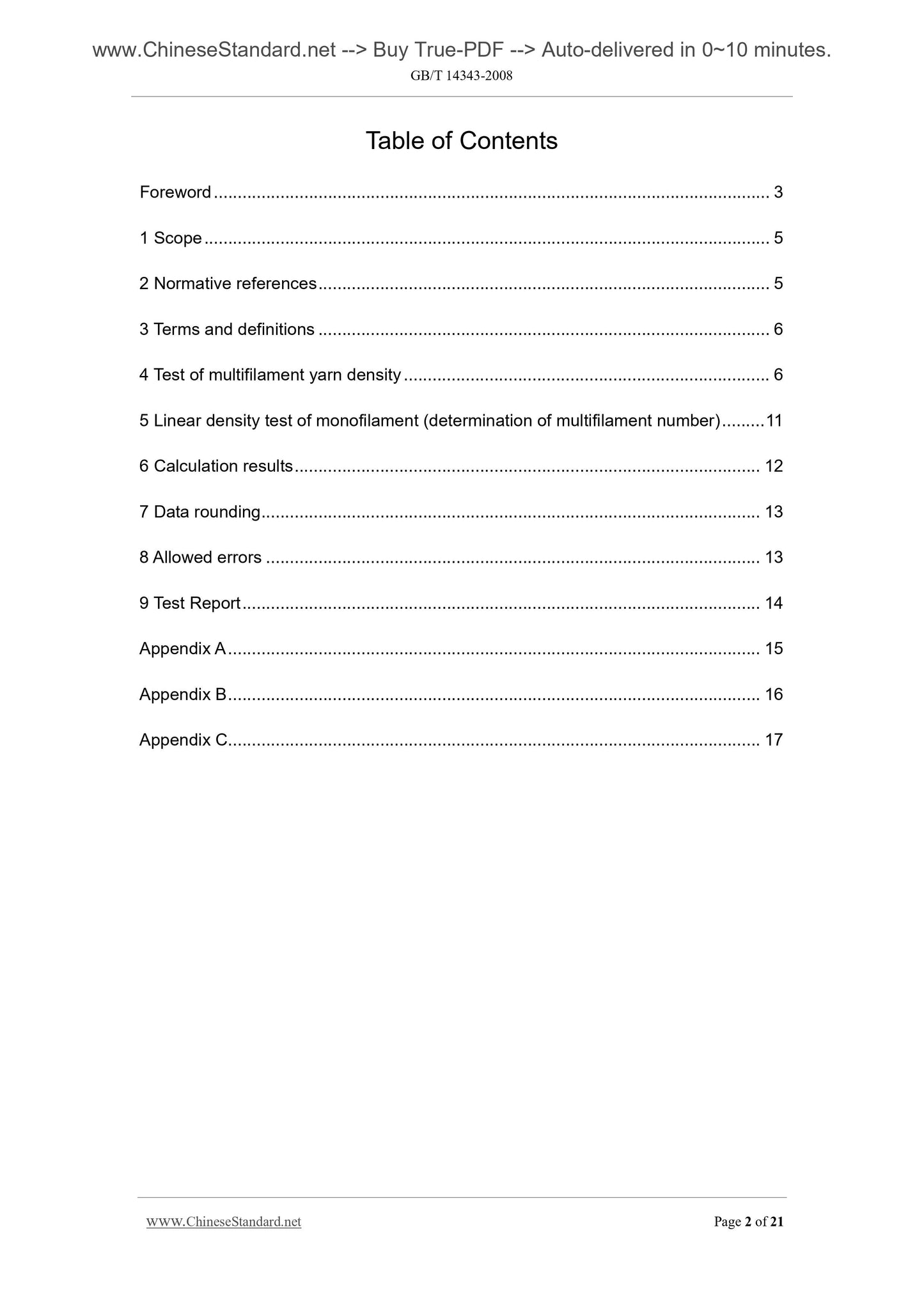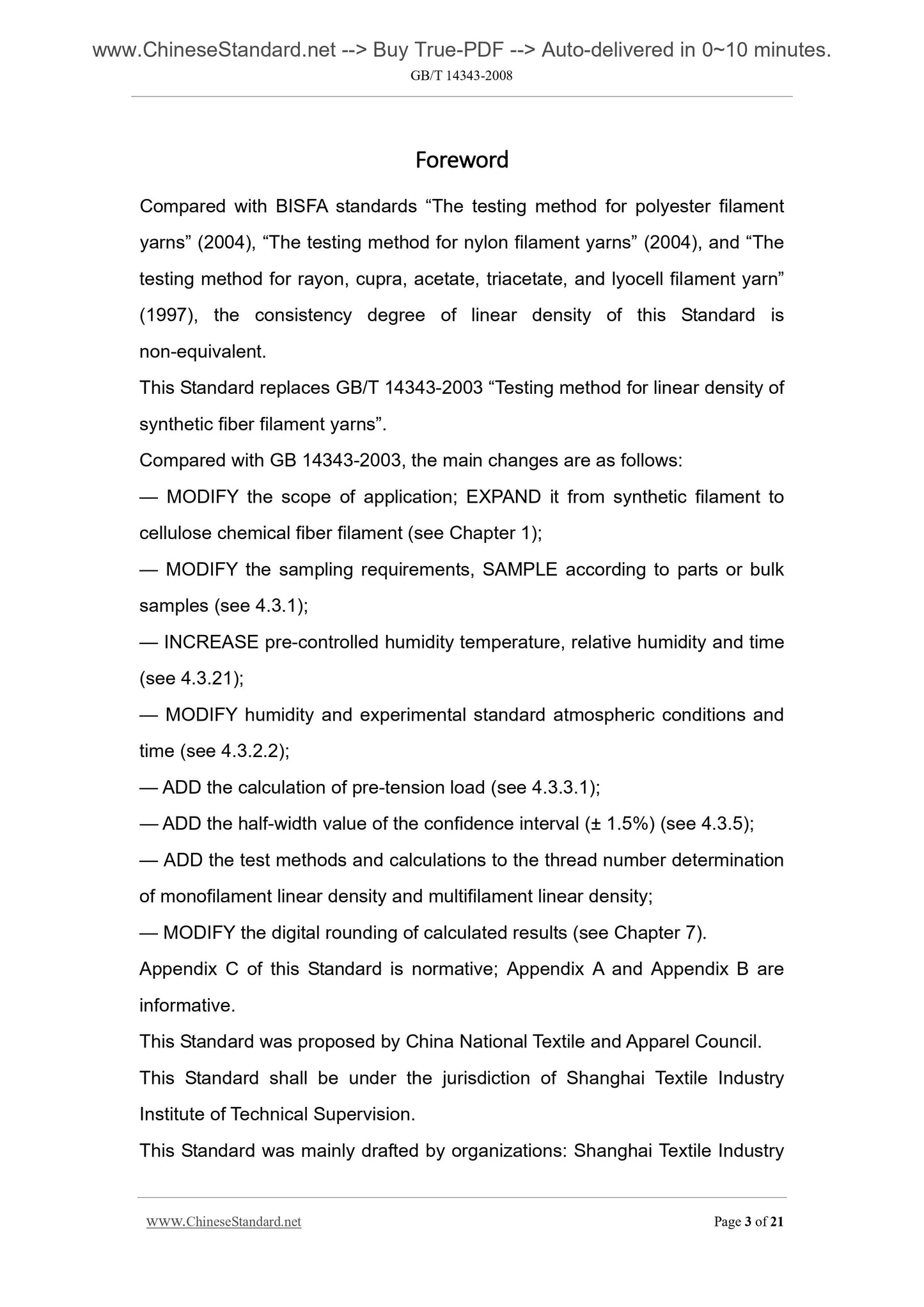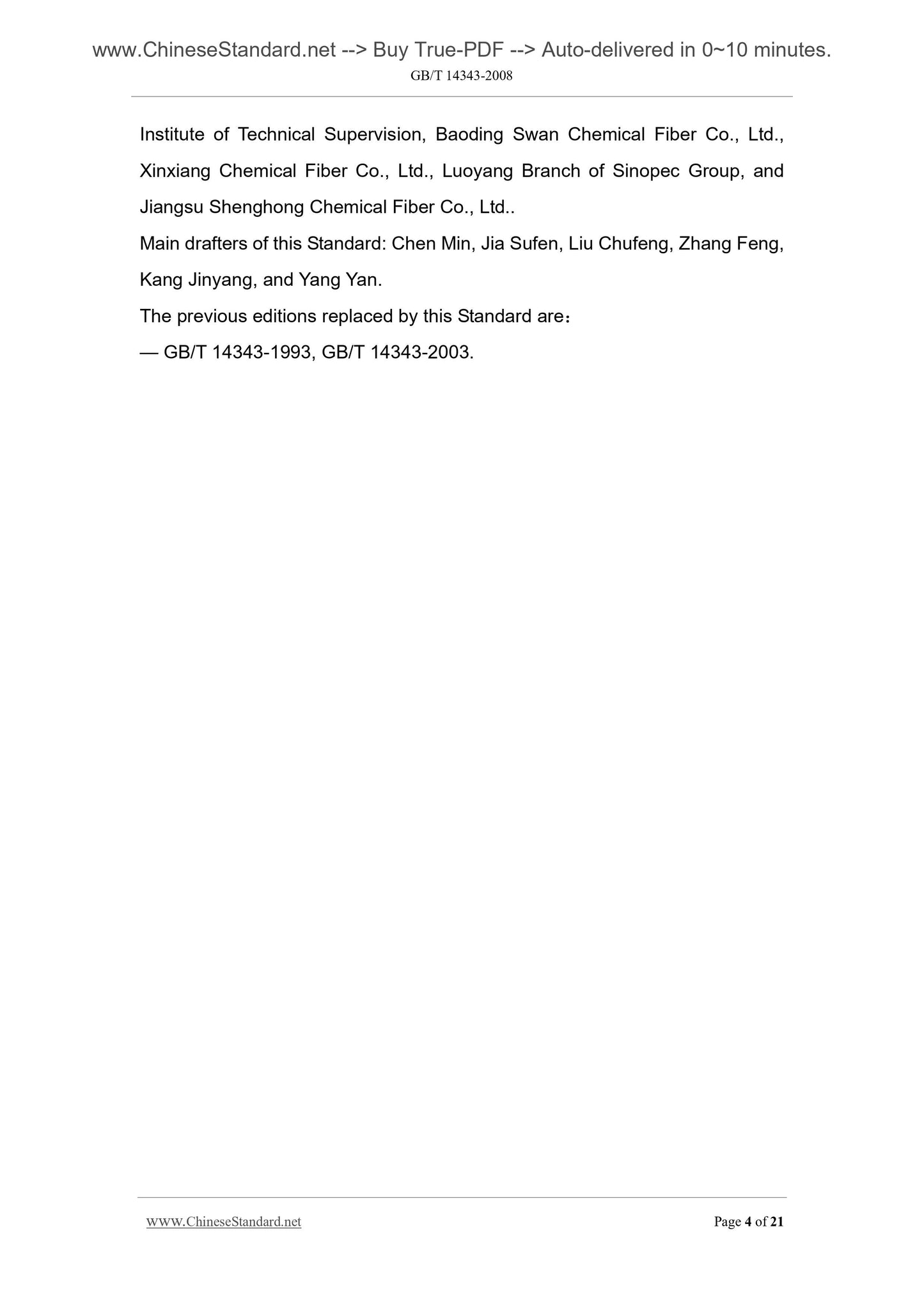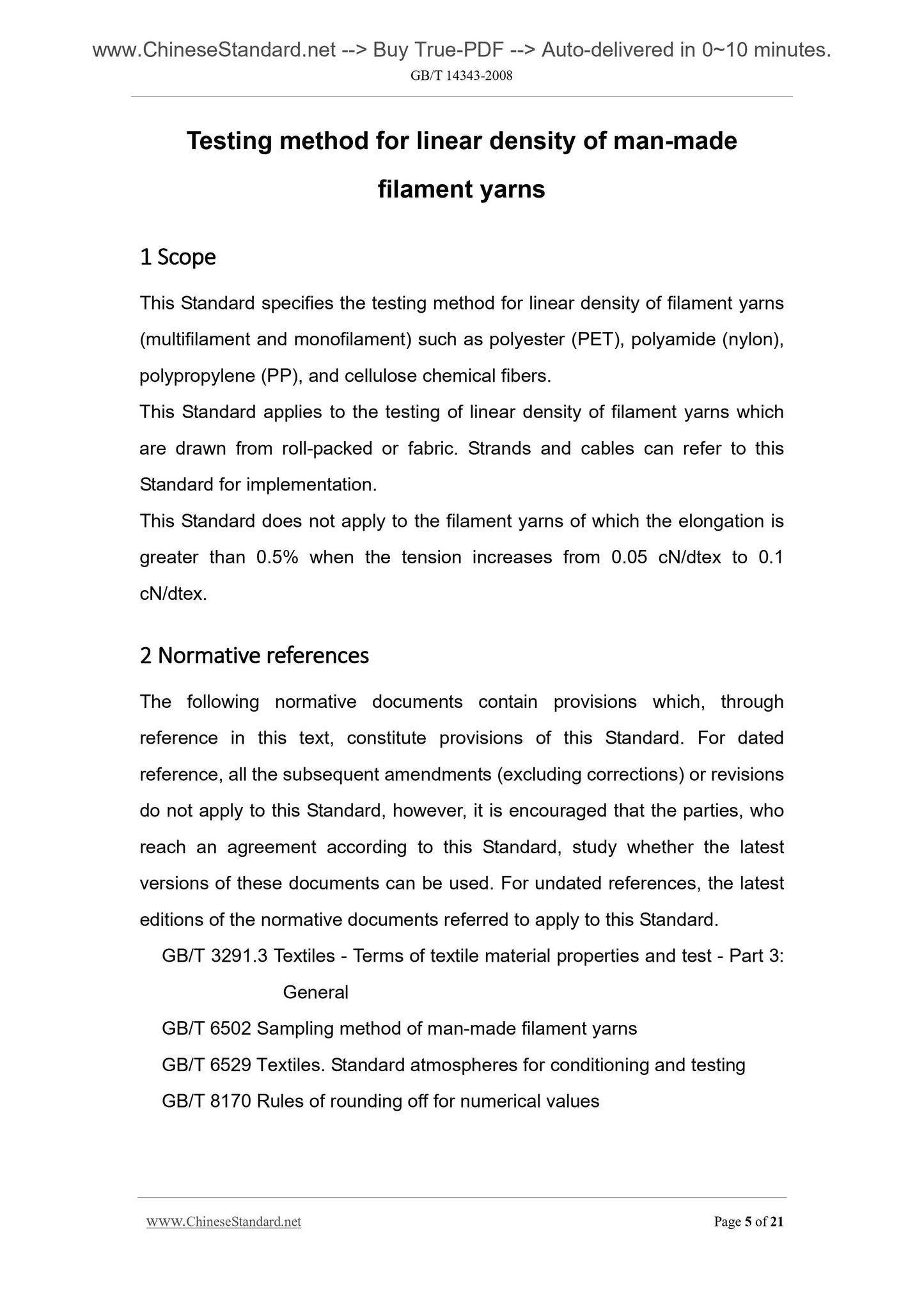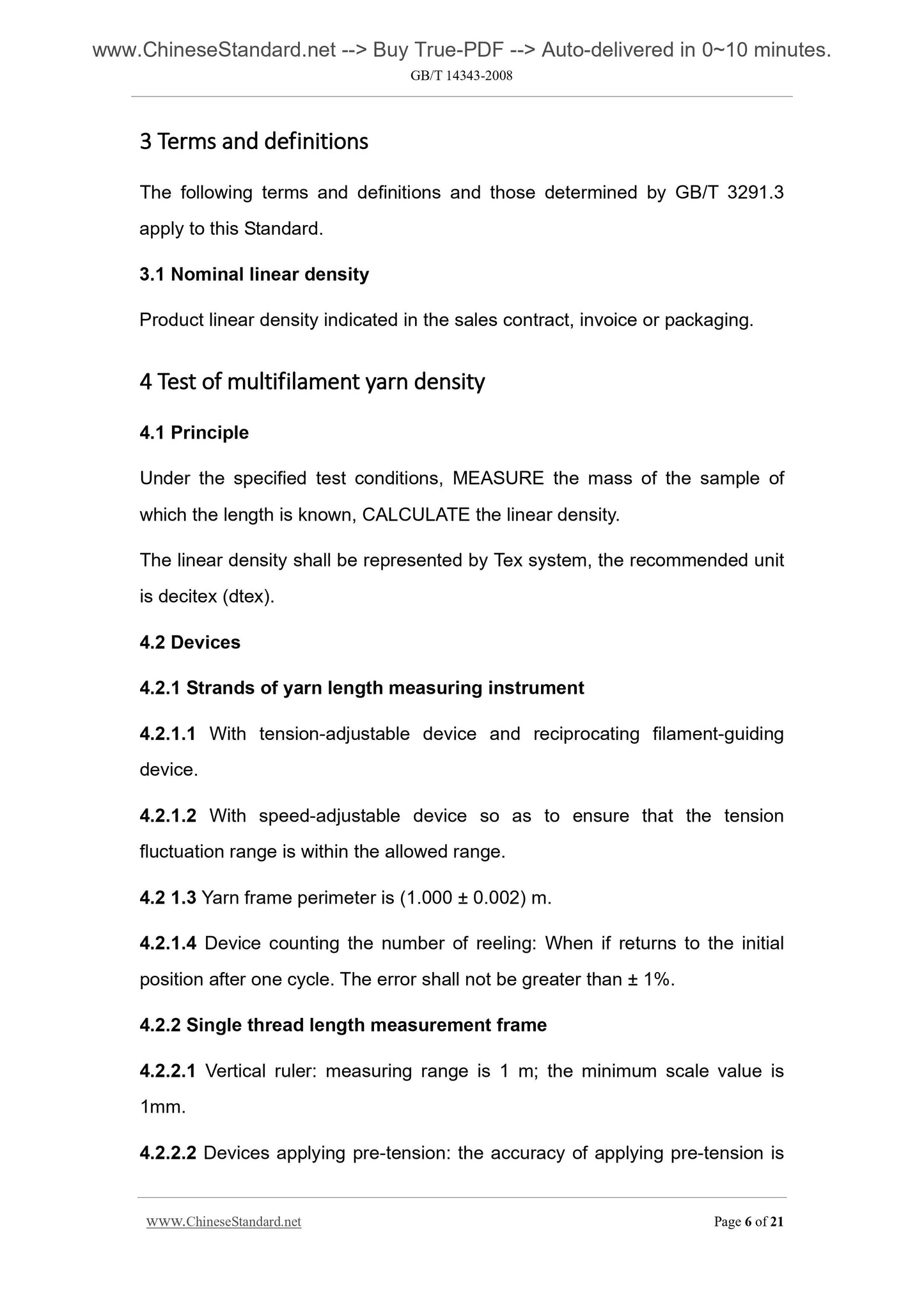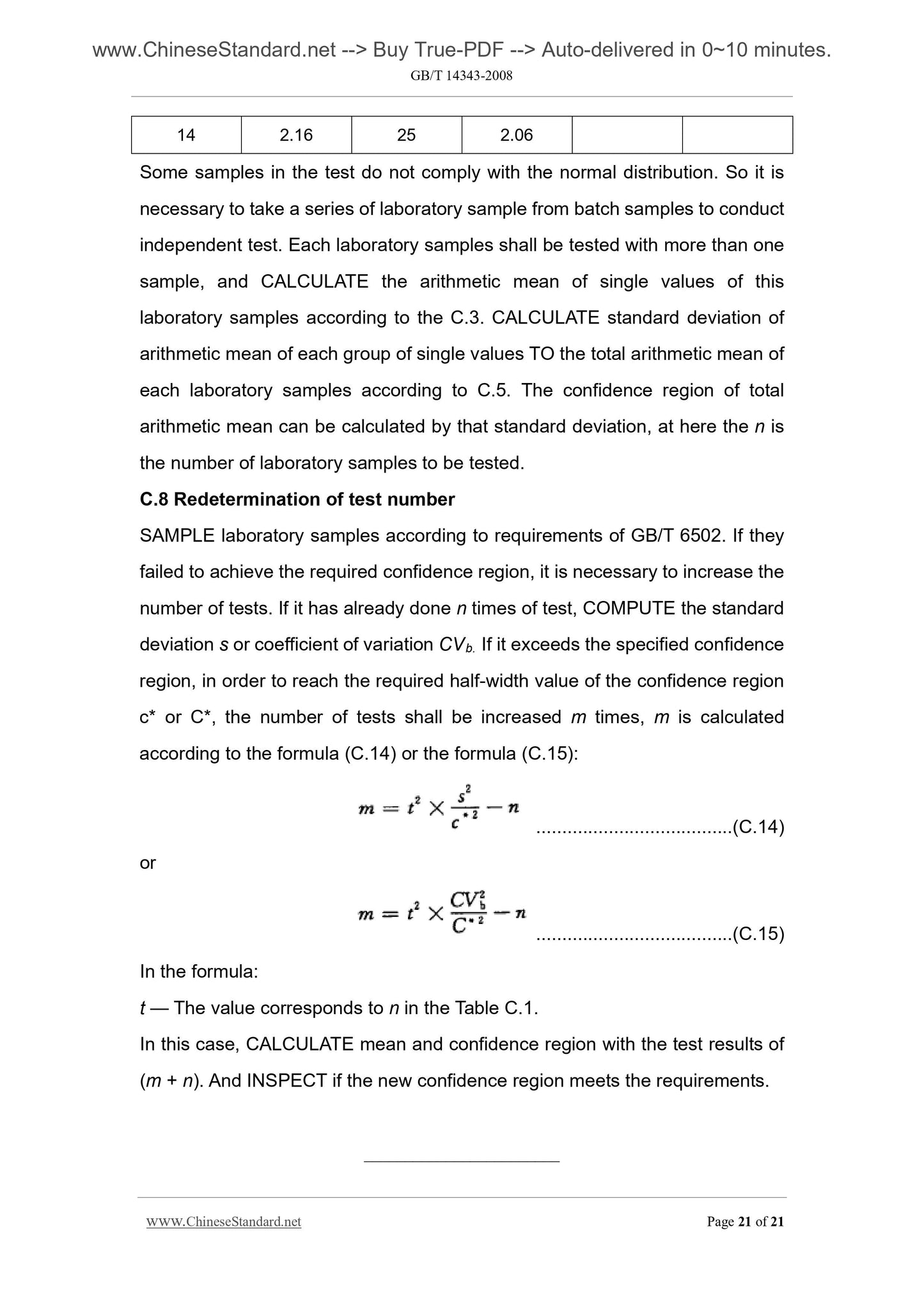1
/
of
7
www.ChineseStandard.us -- Field Test Asia Pte. Ltd.
GB/T 14343-2008 English PDF (GB/T14343-2008)
GB/T 14343-2008 English PDF (GB/T14343-2008)
Regular price
$70.00
Regular price
Sale price
$70.00
Unit price
/
per
Shipping calculated at checkout.
Couldn't load pickup availability
GB/T 14343-2008: Testing method for linear density of man-made filament yarns
Delivery: 9 seconds. Download (and Email) true-PDF + Invoice.Get Quotation: Click GB/T 14343-2008 (Self-service in 1-minute)
Newer / historical versions: GB/T 14343-2008
Preview True-PDF
Scope
This Standard specifies the testing method for linear density of filament yarns(multifilament and monofilament) such as polyester (PET), polyamide (nylon),
polypropylene (PP), and cellulose chemical fibers.
This Standard applies to the testing of linear density of filament yarns which
are drawn from roll-packed or fabric. Strands and cables can refer to this
Standard for implementation.
This Standard does not apply to the filament yarns of which the elongation is
greater than 0.5% when the tension increases from 0.05 cN/dtex to 0.1
cN/dtex.
Basic Data
| Standard ID | GB/T 14343-2008 (GB/T14343-2008) |
| Description (Translated English) | Testing method for linear density of man-made filament yarns |
| Sector / Industry | National Standard (Recommended) |
| Classification of Chinese Standard | W50 |
| Classification of International Standard | 59.060.01 |
| Word Count Estimation | 13,117 |
| Date of Issue | 2008-06-18 |
| Date of Implementation | 2009-03-01 |
| Older Standard (superseded by this standard) | GB/T 14343-2003 |
| Quoted Standard | GB/T 3291.3; GB/T 6502; GB/T 6529; GB/T 8170 |
| Adopted Standard | BISFA-2004, NEQ; BISFA-1997, NEQ |
| Regulation (derived from) | National Standard Approval Announcement 2008 No.10 (Total No.123) |
| Issuing agency(ies) | General Administration of Quality Supervision, Inspection and Quarantine of the People's Republic of China, Standardization Administration of the People's Republic of China |
| Summary | This standard specifies the polyester (PET), polyamide (nylon), polypropylene (PP), cellulose chemical fiber filaments (multifilament and monofilament) linear density test methods. This standard applies to the fabric roll or drawn filament linear density test, strands and cables can refer to use. This standard does not apply when the tension from 0. 05cN/dtex to 0. 1cN/dtex elongation greater than 0. 5% of the filaments. |
Share
